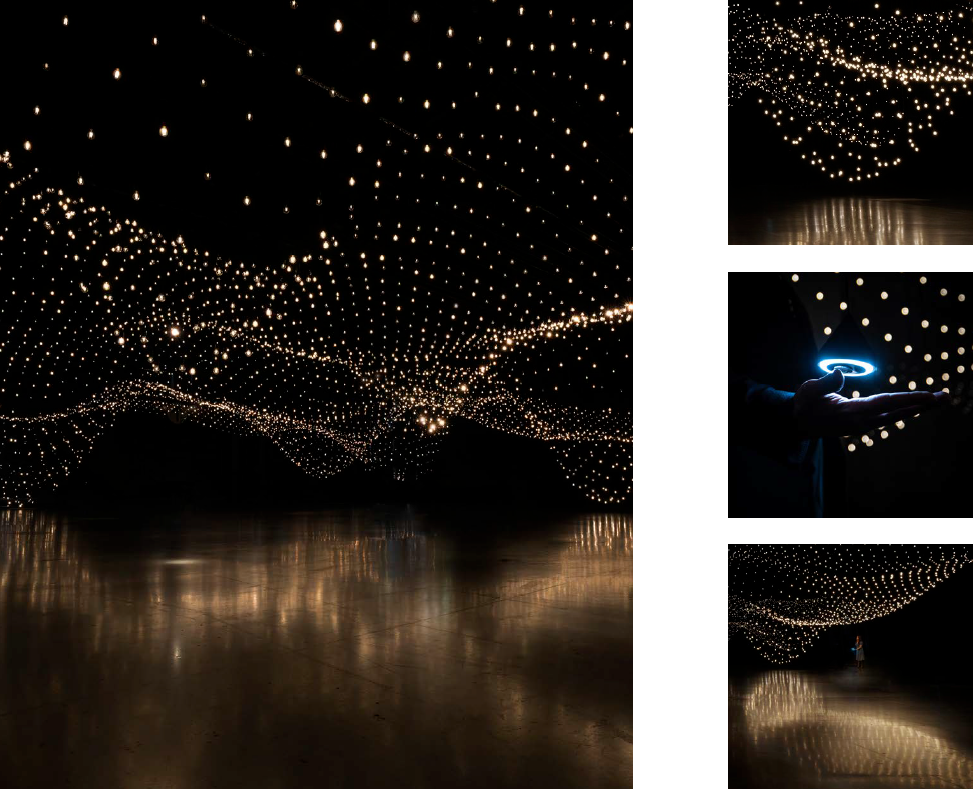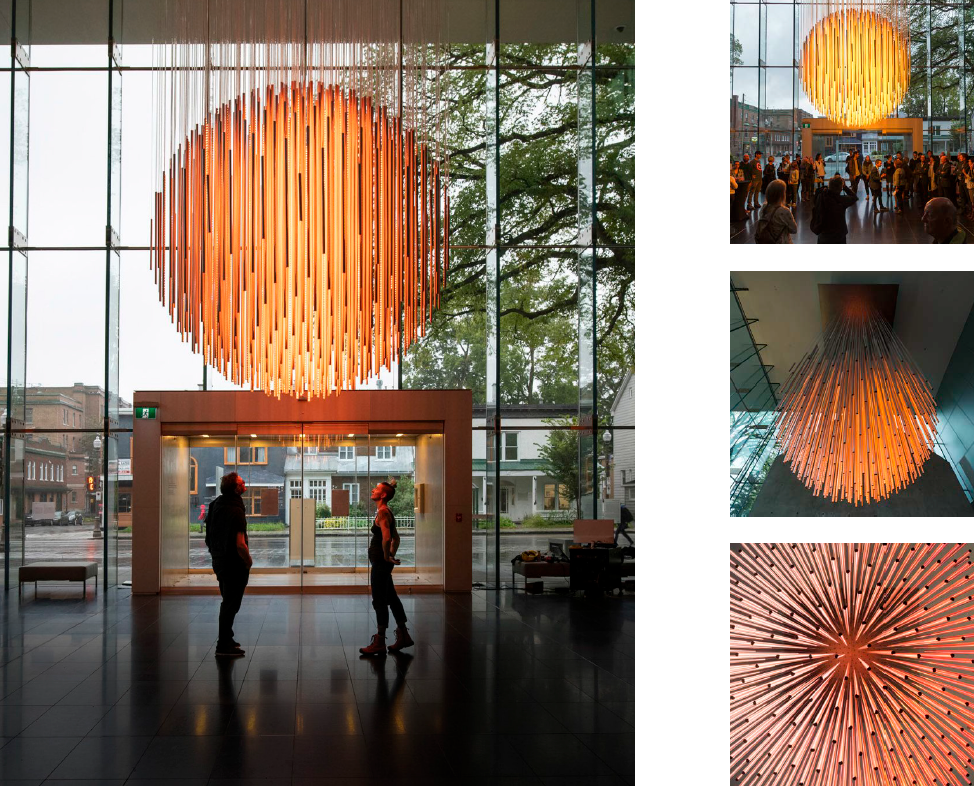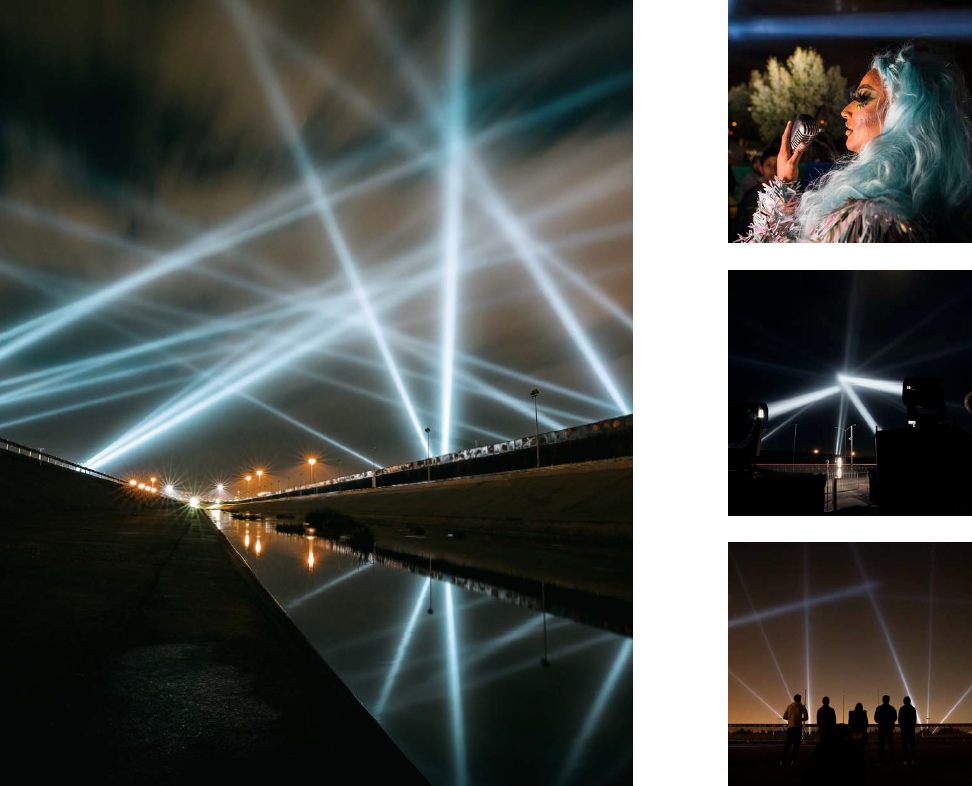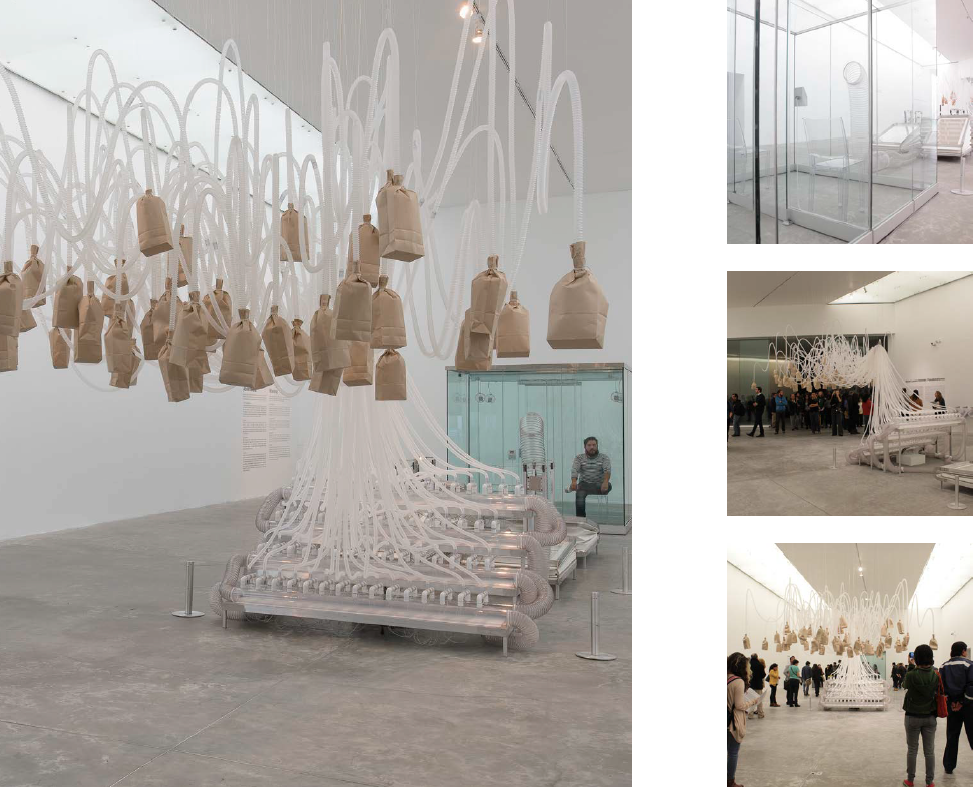Project Atrium: Rafael Lozano-Hemmer
Spectral Subjects
December 13, 2024 - September 14, 2025
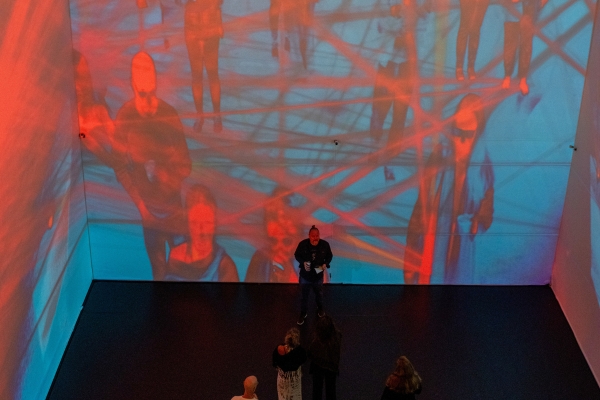
Rafael Lozano-Hemmer, Spectral Subjects (rendering for MOCA Jacksonville), 2024.
Spectral Subjects is a new interactive installation designed to transform the Atrium of the Museum of Contemporary Art Jacksonville. The piece is a thermal observatory, showing a constantly updating map of the room's temperature on three colossal wall-projections. Using state of the art Xenics Dione thermographic cameras, the project detects heat and cold in the environment, including the building’s air circulation and ventilation, visitors’ body heat, and inanimate objects. As temperature is detected, the artwork generates a particle system that is a visible manifestation of its dissipation in the museum, showing, for example, how body heat emanates outward and away from visitors and is exchanged with the cooler, air-conditioned atmosphere.
As with previous biometric art projects by Lozano-Hemmer, the piece is a call to think of the human body as a continuum with the environment around us. The skin is not the limit of our body but only its visible limit. Sound, smell, heat, air/breath, biological waste, and even chemical signals in the form of pheromones are constantly seeping in and out across our body's visible limits, our skin, which is incorrectly described as the boundary between the public and the private. Written and oral language, actions, movement, exteroception, are examples of other manifestations of our extension into our surroundings, as are the resulting buildings, songs, environmental decimation, artworks, and the Anthropocene in general.
Spectral Subjects emphasizes the active role of the spectator as an integral part of the artwork without whom the piece does not exist. The work is meant to perform the double duty of acting as a critical materialization of the reach of our society’s technological perception and providing a playful expression of inclusion and presence, albeit inside a society of the spectacle, selfies, and reality TV.
Sponsors
EXHIBITION PRESENTING SPONSORS
Joan and Preston Haskell
EXHIBITION SUPPORTER
Brooks Rehabilitation, Mayo Clinic, Wende Wilson
PROJECT ATRIUM SPONSOR
Spectral Subjects
An inversive installation by Rafael Lozano-Hemmer
Programming: Hugo Daoust
Production: Benoit Soucy, Emily Green, Luis Morales, Stephan Schulz, Leigh Kotsilidis, Guillaume Tremblay, William Sutton, Najeeba Ahmed
Music: Kyema by Eliane Radigue
Thermal Cameras: Xenics
Commissioned by MOCA Jacksonville to Celebrate its 100th Anniversary.
In 1924, when MOCA was founded, the atmosphere had a carbon dioxide concentration of 304 ppm. The vast majority of scientists today agree that a level of 350 ppm is needed to prevent catastrophic climate change. Currently we have 421 ppm and growing exponentially.
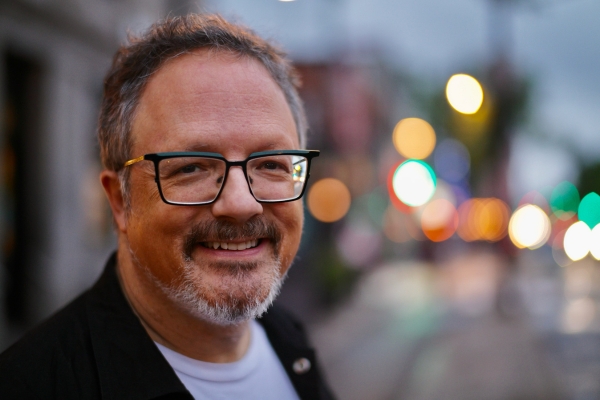
ABOUT RAFAEL LOZANO-HEMMER
Rafael Lozano-Hemmer was born in Mexico City in 1967. In 1989 he received a B.Sc. in Physical Chemistry from Concordia University in Montréal, Canada.
Lozano-Hemmer is a media artist working at the intersection of architecture and performance art. He creates platforms for public participation using technologies such as robotic lights, digital fountains, computerized surveillance, media walls, and telematic networks. Inspired by phantasmagoria, carnival, and animatronics, his light and shadow works are "antimonuments for alien agency."
Hemmer has exhibited his work around the globe, and he was the first artist to represent Mexico at the Venice Biennale with an exhibition at Palazzo Van Axel in 2007.

